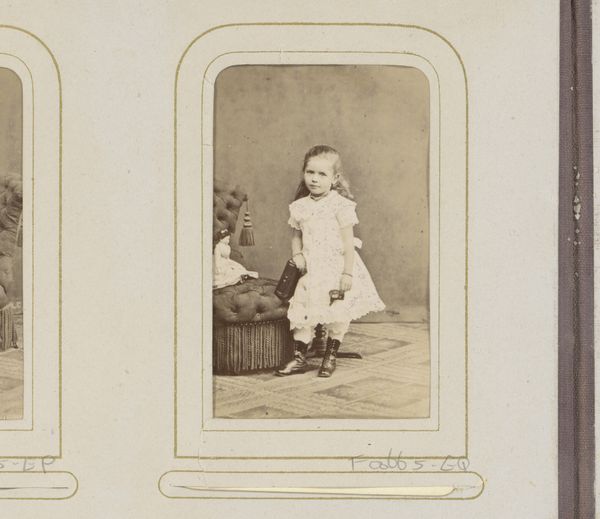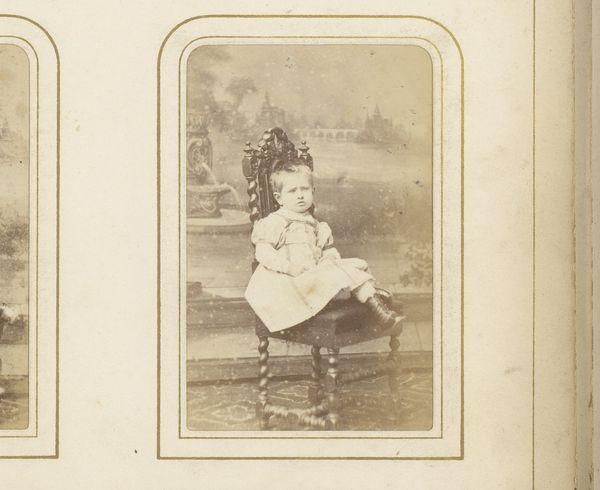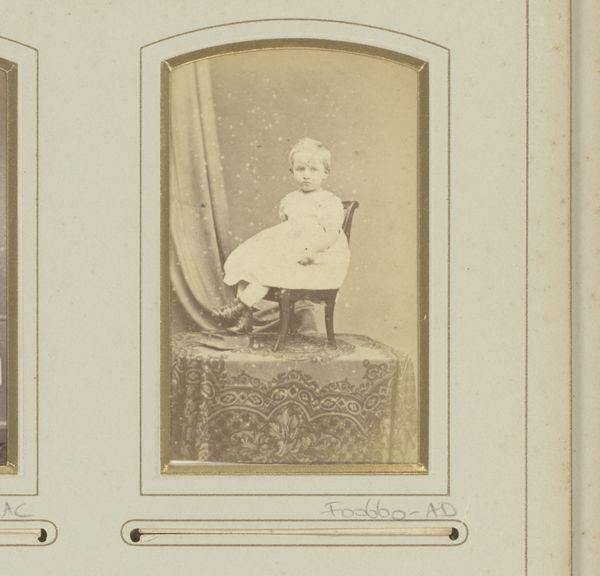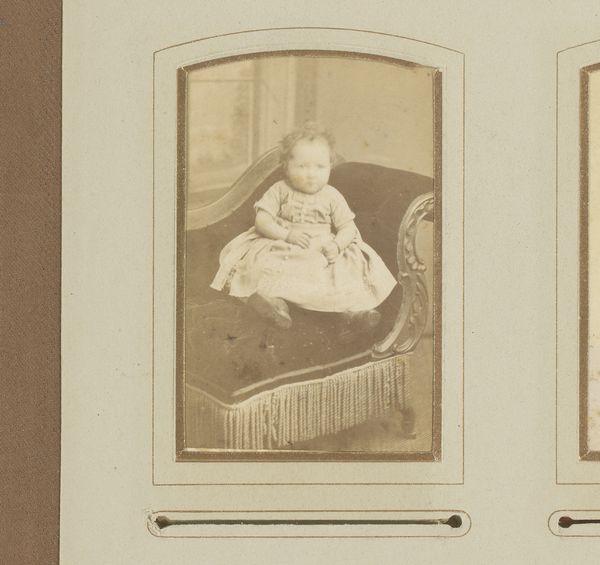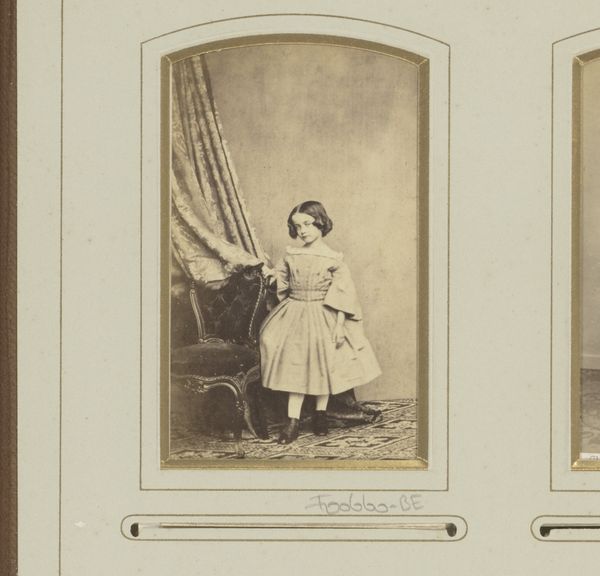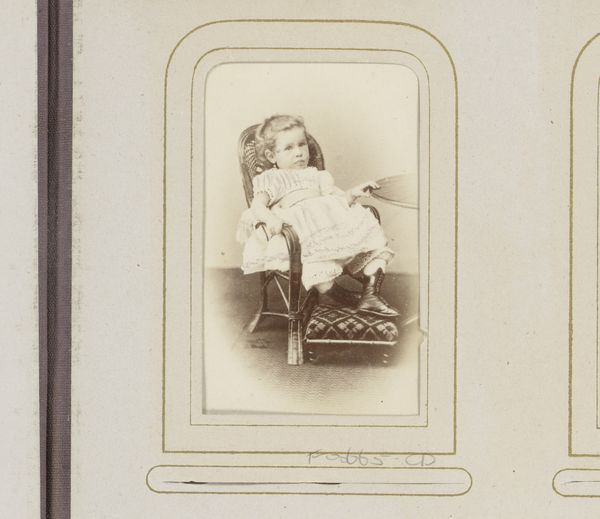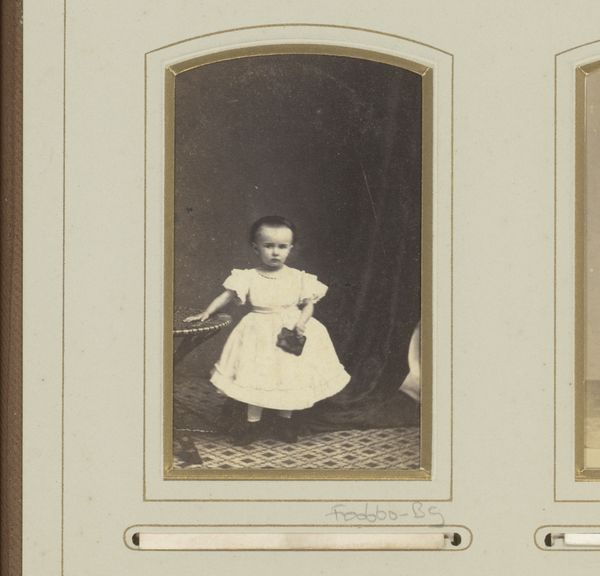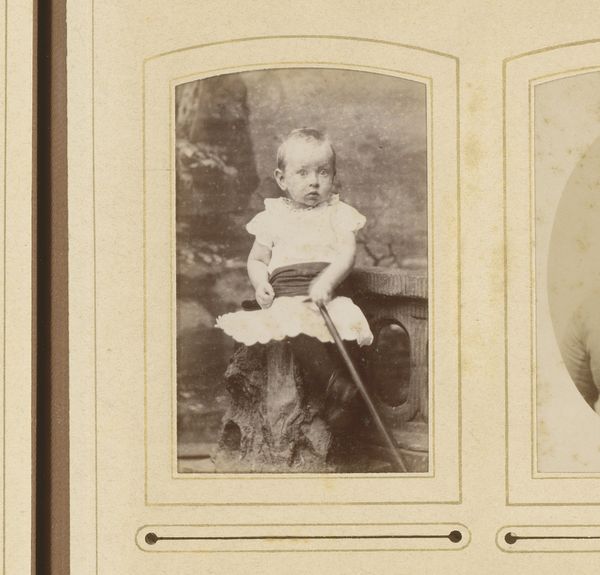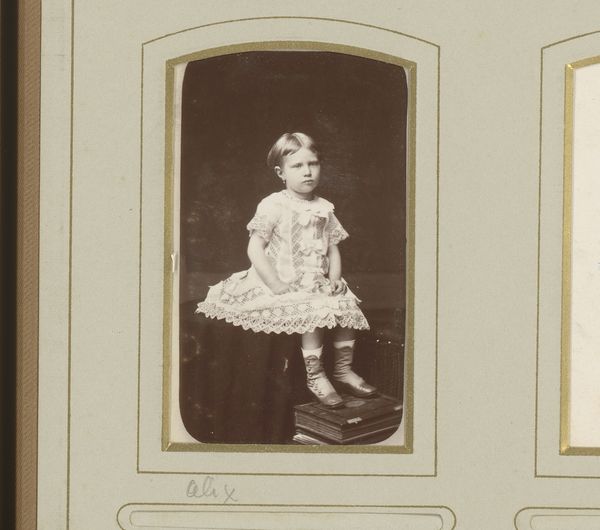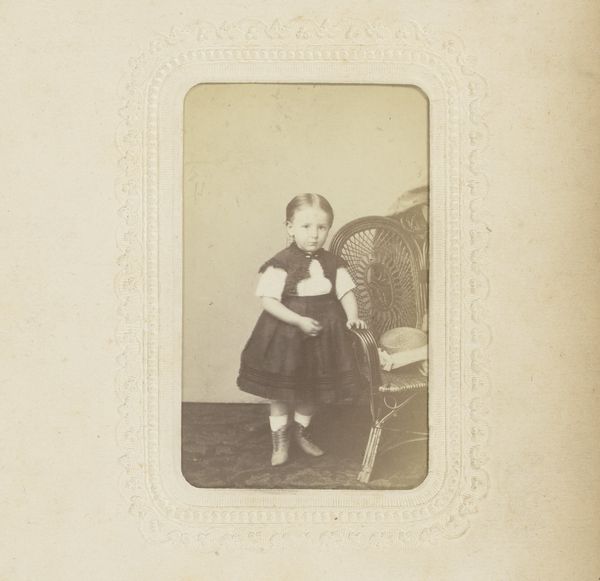
Dimensions: height 102 mm, width 62 mm
Copyright: Rijks Museum: Open Domain
Curator: I am struck by the direct gaze in this photograph; the image is called "Portret van Anna-Lisa Hwasser met een hond" dating from the 1860s to 1870s, by Matheus Hansen. There is something compelling about its simplicity and also Anna-Lisa's stare. What do you think? Editor: My immediate reaction is… unease, almost. There’s a stark formality about it, but that's understandable, given that photographic portraiture was just getting its start. Curator: Indeed. And yet, this is romanticism as it's expressed through photography. Romanticism, in general, offered an opportunity to reflect new social relationships. Matheus Hansen captured more than a likeness; in his work we observe childhood, and we're dealing with class structures that empowered certain families to keep records like these. Editor: It’s interesting to see how quickly visual conventions formed. The arch shape around the image, like a proscenium, feels deliberately crafted to convey respectability, safety, home, a family altar… Even the dog adds to this visual coding; it suggests an idea of faithfulness, especially regarding family connections. Curator: Yes, and think about what it meant for Anna-Lisa to be photographed in the 1860s! She wasn't simply captured; she was positioned within very complex gender and class ideologies. Matheus Hansen actively played into those power dynamics but his artistic choice to capture such a frank and penetrating stare disrupts a passive understanding of this girl. She has opinions. Editor: That’s a compelling point! That seemingly innocent dog carries significant baggage, but the dog also speaks about innocence in relation to Anna-Lisa’s expression: a mix of confidence and unease, especially for a young girl caught in a rigid structure that wasn’t of her making. Curator: There's something so inherently revolutionary about photography in its beginnings – especially within the context of family and women’s shifting identities, which the development of photo technology helped create new access to personal identity creation and family portraiture as the domain for all women—not just the extremely wealthy. Editor: Indeed. The photograph, like an icon, fixes the child and the animal in time and gives the subjects the strength to be more and to express something that cannot be written down and lasts over generations. Curator: And that is one aspect of photography’s particular strength that the artist discovered early in its formation. Thank you. Editor: Thanks; this was enlightening.
Comments
No comments
Be the first to comment and join the conversation on the ultimate creative platform.
